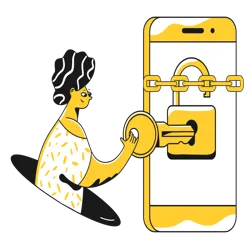
All businesses that process electronic payments such as debit and credit cards, must be PCI compliant. PCI Level 1 compliance, however, may be a completely new term to some business owners. Understanding which security level best suits your company’s needs is essential to how you accept transactions and manage customer accounts. Let’s explain the differences between PCI compliance and PCI Level 1 compliance.
What Is PCI Compliance?
PCI compliance or Payment Card Industry Compliance are security regulations set in place to protect customer credit card data. Businesses that accept credit card payments are required to undergo annual PCI assessments to ensure compliance with the Payment Card Industry Data Security Standards (PCI DSS). These assessments were put together by the PCI DSS Council (PCI SSC). [1]Payment Card Industry Security Standards Council. PCI Security Standards Council”. Accessed on Nov 15, 2023. The six major payment brands—American Express, Discover, JCB, Mastercard, Visa, and UnionPay—form the core committee of the PCI SSC.
Non-compliance with these standards means your business is at a higher risk for a data breach or fraud. Post-data breach, non-compliance can result in steep financial penalties, reputational damage, and, in severe cases, the inability to process future credit card payments.
Businesses must work closely with their payment processors and acquirers to achieve and maintain PCI compliance.

PCI Compliance Levels Explained
PCI Compliance Levels are categories that determine the specific requirements and validation procedures for businesses based on their volume of credit card transactions. The Payment Card Industry Data Security Standard classifies businesses into four levels, with Level 1 having the highest transaction volume, and thus, the most stringent security requirements.
Here’s an overview of each level:
PCI Compliance Level 1:
- Criteria: Merchants processing over 6 million transactions annually across all payment channels including in-store and online.
- Requirements: Must undergo an annual on-site security assessment by a Qualified Security Assessor (QSA). Quarterly network scans by an Approved Scanning Vendor (ASV) are also mandatory.
- Validation: Annual Report on Compliance (ROC) and Attestation of Compliance (AOC) required.
PCI Compliance Level 2:
- Criteria: Merchants processing between 1 million and 6 million transactions annually.
- Requirements: Annual self-assessment questionnaire (SAQ) and quarterly network scans by an ASV.
- Validation: At the card brand’s discretion, they can require ROC and AOC.
Level 3 PCI Compliance:
- Criteria: Merchants processing 20,000 to 1 million eCommerce transactions annually.
- Requirements: Annual SAQ and quarterly network scans by an ASV.
- Validation: At the card brand’s discretion, they can require ROC and AOC.
Level 4 PCI Compliance:
- Criteria: Merchants processing fewer than 20,000 eCommerce transactions or up to 1 million transactions overall annually.
- Requirements: Annual SAQ and quarterly network scans by an ASV.
- Validation: ROC and AOC may be required at the card brand’s discretion.[2]Cimcor. “A Beginner’s Guide to PCI Compliance”. Accessed on Nov 3, 2023.
In terms of PCI compliance, businesses typically get categorized based on their card transaction volume. As such, they must comply with the corresponding level’s requirements. It’s important to note that while these levels provide a framework, card brands, like Visa, Mastercard, and American Express, may have their own specific requirements and validation processes in addition. There are also a lot of changes coming down the pipeline in 2024, so stay tuned for updates as 2023 comes to an end.[3]BreachLock. “PCI DSS 4.0 and Penetration Testing – What You Need to Know – BreachLock”. Accessed on Nov 15, 2023.
In addition to the SAQ and network scans, businesses at all levels must adhere to general PCI DSS requirements. These include encryption of cardholder data, access control, and regular security testing.
Failure to achieve and maintain PCI Compliance can result in fines, penalties, and the inability to process future credit card payments, so it’s essential to take these requirements seriously.
What Is PCI DDS Level 1 Compliance?
PCI DSS Level 1 Compliance is the highest level of compliance within the PCI DSS framework. It applies to businesses and organizations that process a substantial volume of credit card transactions annually, typically those exceeding 6 million transactions across all payment channels (e.g., in-store, online).

PCI level 1 requirements
The PCI DSS Level 1 Compliance Process Entails:
- Annual On-Site Assessment. Level 1 merchants are required to undergo an annual on-site security assessment conducted by a Qualified Security Assessor (QSA). The QSA is an independent entity certified by the Payment Card Industry Security Standards Council (PCI SSC) to assess and validate compliance.
- Quarterly Network Scans. Businesses at Level 1 must conduct quarterly vulnerability scans of their network and systems by an Approved Scanning Vendor (ASV). The ASV scans and identifies potential vulnerabilities that cybercriminals could exploit.
- Comprehensive Compliance Validation. Level 1 merchants are subject to a more extensive validation process compared to the lower levels. This includes a thorough examination of their compliance with all PCI DSS requirements, security policies, and controls.
- Annual Reporting. As part of the compliance process, Level 1 merchants must submit an Annual Report on Compliance (ROC) and an Attestation of Compliance (AOC) to demonstrate that they meet all PCI DSS requirements. The ROC provides details of security measures and controls in place. The AOC is a self-assessment document signed by an authorized representative.
- Stringent Security Measures. Level 1 compliance also requires the implementation of stringent security measures, such as data encryption, access controls, intrusion detection systems, and comprehensive security policies and procedures.
PCI DSS Level 1 Compliance aims to minimize the risk of data breaches and fraud by imposing strict security standards and requirements. These can be time-consuming and create overhead for your business, but they are important to ensure you’re doing everything you can to reduce your risks of breach and fraud.
What Does Level 1 PCI Compliance Mean For Your Business?
Obtaining and maintaining PCI DSS Level 1 compliance can be difficult. Choosing a PCI DSS Level 1 compliant provider eliminates the need for your company to do the work of a payment processor and ensures your customers’ credit card security.
As you can imagine, achieving and maintaining PCI DSS Level 1 compliance is crucial for businesses with high transaction volumes. It helps by protecting sensitive cardholder data, enhancing customer trust, and reducing the risk of financial penalties resulting from non-compliance.
It also demonstrates a commitment to cybersecurity best practices. Today, data breaches and cyberattacks are a significant concern for both businesses and consumers. Big-name brands like Target, PF Changs, and others have had historic and widely discussed data breaches with millions of cardholders’ data compromised.[4]Redriver. “Warnings (& Lessons) of the 2013 Target Data Breach”. Accessed on Nov 3, 2023.
How to Comply with PCI DSS as a Level 1 Merchant
Your chosen payment processor is typically responsible for all of your credit card security systems. If all solutions you implement in your store are already certified PCI DSS Level 1 compliant, a lot of your requirements are already fulfilled.
If you’re a Level 1 merchant, consider your operating environment for vulnerabilities. These may include things like:
- Data storage practices.
- Employee access to card information.
- Security cameras (do any point at registers with the ability to record card numbers?).
- Equipment lockup/shutdown procedures.
- Encryption.
Once you’ve assessed your environment, get into contact with your payment processor and software vendor for a personalized run-down of what you need to do to become PCI DSS level 1 compliant within their equipment/software framework. Since every large business is different, they’ll be able to give you a customized understanding of what the process will look like.
Note: If you process > 2.5 million transactions per year, check with your payment processor to see if you fall into this category, as depending on the card types, you still may fall into the Level 1 category.
What Is a Level 1 PCI Service Provider?
A Level 1 PCI Service Provider is a company or organization that provides services related to payment card processing; they store, transmit, and process credit card transactions that exceed 6 million annual transactions.
If you partner with a Level 1 PCI Service Provider for your payment processing service and equipment needs, your credit card security verification will be taken care of.

Final Thoughts on PCI Compliance
For most businesses, you’ll only need to personally achieve PCI DSS Level 4 compliance (meaning that you’ll need to complete an annual SAQ and a quarterly scan). However, if a business owner accepts large volumes of transactions, PCI DSS Level 1 compliance can lead to considerable cost savings. For additional security to protect your business and customers, it’s important to find a payment processor that is certified as a Level 1 PCI service provider with advanced fraud prevention services. Finding such a provider can be tricky without the assistance of a merchant service provider. They facilitate your partnership with a Level 1 PCI service payment provider to protect cardholder data, and most importantly, your bottom line.







